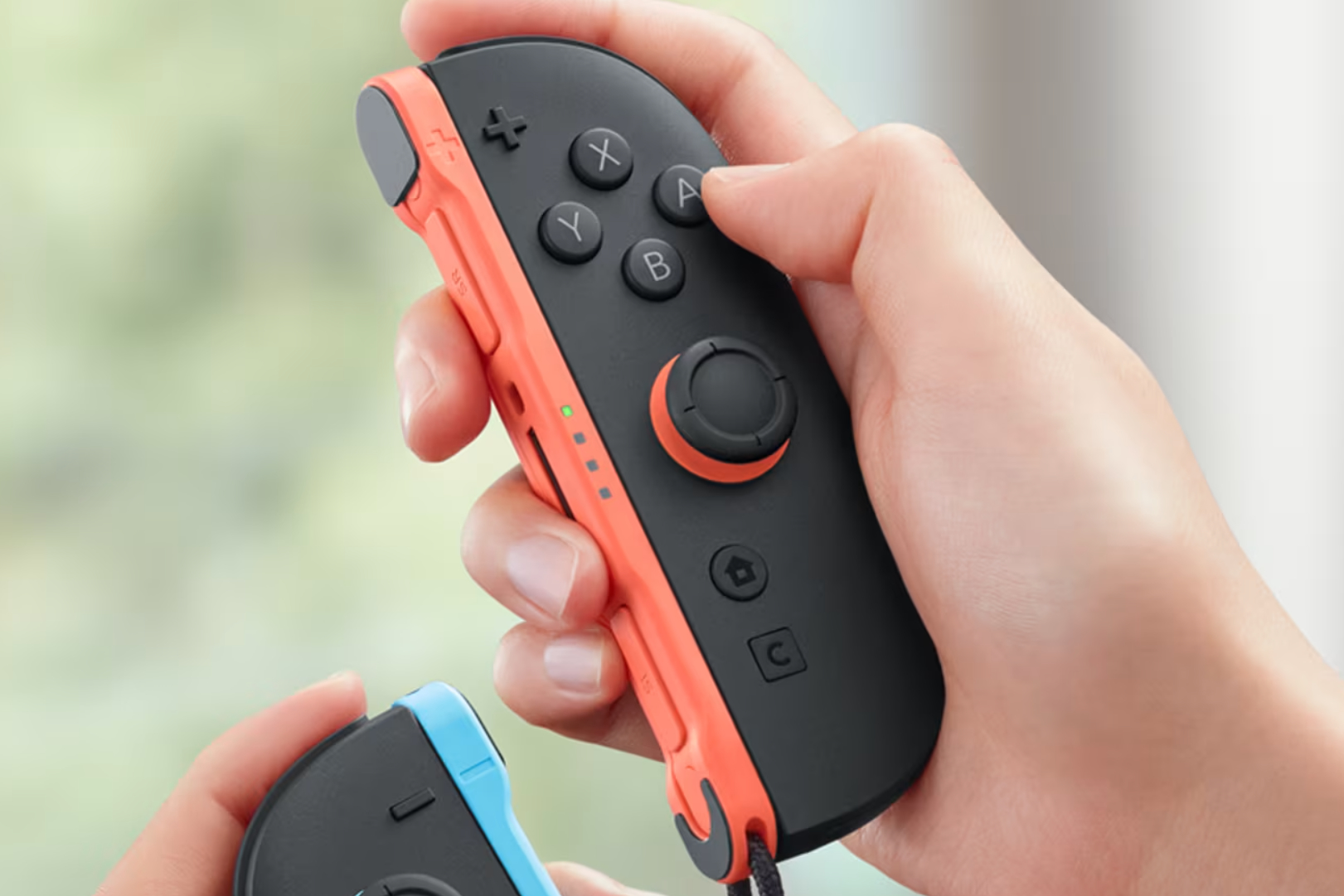
Stick drift comes for everyone, but Nintendo Switch hardware has a reputation for being particularly prone to failure. Naturally, everyone is wondering if the Nintendo Switch 2 and its new Joy-Con controller is any better than its predecessor. News that at least one person purchased a brand new Switch 2 that appeared to come out of the box with stick drift isn’t helping paranoia around drift. So, what’s actually going on — and should you be worrying, too?
Stick drift refers to the phenomenon where a controller’s joystick seemingly has a mind of its own. Your machine will interpret input that isn’t actually happening, often causing characters or cursors to perpetually move in a specific direction. You can play around it through new input that overrides the drift, but it’s a nuisance that begets inaccuracy during gameplay. Usually, you have to either repair the controller or buy new gear.
Stick drift is not unique to Nintendo, but there are many potential reasons for the stigma. “Joy-Con drift” is a punchy term compared to something like “DualSense drift” or “Xbox wireless controller drift.” The detachable controllers also have more of a culture around them where people will buy new colors simply to have a rad system. While all platforms provide unique colorways, those on the Switch are more whimsical. Beyond pastel options, sometimes one set of Joy-Con will come in two totally different colors that give the console an air of artistic asymmetry. The portability allows Joy-Con to function more as a fashion accessory compared to controller that is always stuck at home. Joy-Cons are also slightly more expensive than the basic controllers from competitors, so defects can feel like a bigger deal on the Switch.
There’s no perfect way to collect data around it, but anecdotally, more people have searched for PlayStation-related drift than Nintendo-specific drift, even accounting for different search terms, over the last five years.

People will cite statistics like the one where an apparent 40% of controllers eventually experience the issue, but the investigation in question polled just over 900 people. The first Switch has sold more than 150 million units, and is currently on track to become the best-selling system of all time.
The good news is that the person who unboxed a Switch 2 with stick drift appears to be an uncommon experience. You have to scroll dozens of posts to see anyone else claiming to have the same issue, and even then, that commenter says they were able to recalibrate the controller manually. Elsewhere, there are errant reports of Joy-Con 2 drift which, while Polygon cannot individually confirm, don’t meaningfully alter the prevalence of the issue if taken at face value. Nintendo’s sold millions of Switch 2 consoles. If even a fraction of a percent of those consoles have drift, that could mean thousands of people. It’s awful for anyone experiencing it, of course, but that doesn’t mean the average Switch 2 owner has to worry about Joy-Con drift.
At least, not this early on. Most of the time, stick drift will happen after extended wear and tear. The Switch 2 hasn’t been out for even a month yet. Nintendo claims that the system as a whole was designed from the ground-up, including the Joy-Con, but experts who have broken down the tech say the innards are largely similar to the original Joy-Con. This would suggest that Joy-Con 2 will be just as susceptible to drift in the long term.
Like the first time around, Nintendo offers free Joy-Con replacements for the Switch 2, provided they’re still under warranty. The fine print stipulates that warranty only lasts a year, but historically Nintendo has been amenable to fixing controllers with an inactive warranty.
Experiences around Joy-Con repair online are largely positive, with users noting that at best, they had to make due without a controller for a couple of weeks. There are plenty of reports of people who have sent in Joy-Con multiple times, all free of charge. Unfortunately, a much smaller segment of that population say that their controllers started drifting even after repairs. At least Nintendo will take those back for free, which is a much better option than shelling out another $79 for a fresh pair.
It’s possible to personally fix Joy-Con for much cheaper, and fans have relied on low-tech methods that merely require a piece of cardboard. But if you elect that route, you’ll also be voiding your warranty while chancing the possibility of making a mistake. You can expect similar circumstances on the Switch 2.

In the past, furor around Joy-Con drift prompted lawsuits that caused Nintendo to apologize to customers over the issue. As Nintendo tells it, the Japanese company has continually been improving Joy-Con durability throughout the lifecycle of the first Switch, and enhancements were a consideration when developing the Switch 2.
“The control sticks for Joy-Con 2 controllers have been redesigned and have improved in areas such as durability,” a Nintendo spokesperson told VGC. When asked by Polygon about wear and tear on the Joy-Con, Nintendo was mum on what players could expect on Switch 2, allegedly out of worry that specifics would be akin to sharing proprietary information.
Things might unfold differently for the Switch 2. The magnetic strips mean that the hardware comes together in slightly different way, and mouse controls also mean that people will be using Joy-Con 2 on all sorts of unusual surfaces. The potential for friction is higher by these factors alone.
It won’t be surprising if we see more reports of Joy-Con drift on the Switch 2. You might even experience Joy-Con 2 drift yourself. Then again, all of my PS5 controllers have succumbed to drift while none of my Joy-Con on the Switch have had issues. Your mileage will vary, but for now, there’s no reason to believe the Switch 2 will have a pervasive hardware flaw any more than its rivals do.
